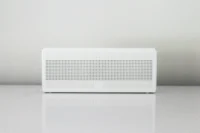- Home
- Articles
- Architectural Portfolio
- Architectral Presentation
- Inspirational Stories
- Architecture News
- Visualization
- BIM Industry
- Facade Design
- Parametric Design
- Career
- Landscape Architecture
- Construction
- Artificial Intelligence
- Sketching
- Design Softwares
- Diagrams
- Writing
- Architectural Tips
- Sustainability
- Courses
- Concept
- Technology
- History & Heritage
- Future of Architecture
- Guides & How-To
- Art & Culture
- Projects
- Interior Design
- Competitions
- Jobs
- Store
- Tools
- More
- Home
- Articles
- Architectural Portfolio
- Architectral Presentation
- Inspirational Stories
- Architecture News
- Visualization
- BIM Industry
- Facade Design
- Parametric Design
- Career
- Landscape Architecture
- Construction
- Artificial Intelligence
- Sketching
- Design Softwares
- Diagrams
- Writing
- Architectural Tips
- Sustainability
- Courses
- Concept
- Technology
- History & Heritage
- Future of Architecture
- Guides & How-To
- Art & Culture
- Projects
- Interior Design
- Competitions
- Jobs
- Store
- Tools
- More
The Art of Thermal Comfort: Smart Bedding for Hormonal Nights

Enter smart bedding, a category of textiles and technologies that are reshaping how we think about comfort. Whether you’re working with high-end interiors or looking to design a wellness-focused sleep space, understanding thermal regulation is no longer optional—it’s essential.
One standout resource in this domain is Or & Zon, a brand that curates bedding guides specifically tailored for life stages like menopause, offering insight into materials that breathe, cool, and adapt with the body. As more people prioritize wellness in the home, these kinds of tools are becoming vital components of smart, responsive design.
Table of Contents
ToggleHormonal Nights Meet Design Thinking
It’s no secret that architecture and interior design are moving toward more human-centric principles. We’ve seen this in biophilic design, sensory integration, and now, in what might be called thermal empathy. Thermal comfort is deeply personal, affected by age, activity level, environment—and, of course, hormones.
For women experiencing menopause, thermal regulation becomes a nightly challenge. According to the National Institutes of Health, over 75% of women report experiencing night sweats and hot flashes during perimenopause, disrupting sleep and reducing overall quality of life. The design world is increasingly recognizing that textiles and materials can help mitigate this.

Beyond Thread Count: What Makes Bedding Smart?
Forget thread count as the sole benchmark of luxury. When it comes to menopausal comfort, breathability, moisture-wicking capabilities, and temperature reactivity matter more. Here’s what smart bedding really means in this context:
- Natural Materials: Linen, bamboo, and eucalyptus fibers are naturally breathable and wick moisture away from the body. Linen, for instance, absorbs up to 20% of its weight in moisture before feeling damp, making it ideal for night sweats.
- Weave & Structure: Percale weaves offer a crisp, cool feel, while sateen may feel heavier and warmer—less ideal for heat-sensitive sleepers. The construction of the fabric impacts airflow and heat retention.
- Thermoregulating Technology: Some advanced bedding brands now include phase-change materials (PCMs) that absorb and release heat as needed, maintaining an optimal microclimate through the night.
- Hypoallergenic Properties: Hormonal changes can also increase skin sensitivity. Choosing non-toxic, OEKO-TEX-certified materials helps reduce irritation and ensures safer, chemical-free sleep environments.
Bedding Meets Biophilic Design
Smart bedding doesn’t exist in a vacuum. It thrives in a well-designed space that supports sleep through lighting, texture, sound insulation, and even aroma. Combining smart bedding with biophilic design principles—like natural materials, soothing earth tones, and soft ambient lighting—can create a sleep sanctuary that’s both functional and aesthetically pleasing.
For example, using linen drapery alongside linen bedding creates a unified textural experience that promotes calm and reduces cognitive load. Add in calming greenery like a snake plant (which purifies air), and the room begins to support wellness on multiple levels.
Designing for Wellness Is Designing for Everyone
Image from Unsplash
While menopausal nights are one focus, designing for thermal comfort extends to many demographics: children, athletes, people recovering from illness, and even individuals living in climates with dramatic temperature swings.
For architects, this means thinking more intentionally about bedroom microclimates:
- What direction does the bedroom face?
- Is cross-ventilation optimized?
- Are HVAC systems zoned?
- Is radiant flooring used (which can contribute to heat retention under the bed)?
These factors all influence thermal comfort and should be considered alongside soft materials like bedding and upholstery.
Case Study: From Clinical to Comfortable
Consider the case of a client in her early 50s renovating a master suite in Los Angeles. The brief was simple: “I need to sleep through the night without waking up drenched in sweat.”
The final solution blended several design strategies:
- Architectural: Added operable clerestory windows for passive night cooling.
- Interior Design: Swapped heavy drapes for linen shades and replaced a memory foam mattress with a breathable hybrid latex model.
- Bedding: Invested in bamboo and linen sheet sets recommended by curated sources like Or & Zon.
The result wasn’t just thermal comfort—it was emotional relief. “It’s the first time in months I’ve slept for six hours straight,” she said. The impact of such small, thoughtful changes is profound and lasting.

Thermal Equity in Design
One of the most overlooked elements in residential design is the assumption of uniform comfort. In reality, partners often sleep at different temperatures. Smart bedding solutions—like dual-zone duvets or individual cooling pads—cater to personal differences, reducing nighttime disturbances and improving sleep quality for both.
In this way, smart bedding becomes a tool not just for thermal regulation, but for relationship harmony—and that’s a design feature you won’t find in a blueprint.
The Aesthetic of Sleep
Just because bedding is functional doesn’t mean it has to sacrifice style. Today’s smart bedding brands offer minimalist, natural-hued palettes that complement modern and Scandinavian interiors beautifully. Think muted sage, stonewashed clay, and flax—a refreshing contrast to synthetic polyester blends with aggressive patterns.
Wellness is not an afterthought in modern design; it’s integral. The bedding industry is catching up, offering solutions that are visually serene and physiologically supportive. As designers, curators, or architects, recommending such solutions isn’t a luxury—it’s a responsibility.
The future of interior wellness lies in responsive environments, and smart bedding is a perfect example of this convergence. As we continue to explore how design can serve every stage of life, thermal comfort should be central to our discussions.
Menopausal or not, we all benefit from sleep environments that are intelligently designed, sensorily appealing, and attuned to our evolving needs. And thanks to thoughtful curation from sources like Or & Zon, navigating these choices has never been easier—or more beautiful.
illustrarch is your daily dose of architecture. Leading community designed for all lovers of illustration and #drawing.
Submit your architectural projects
Follow these steps for submission your project. Submission FormLatest Posts
The Ultimate Guide to Fencing in North Dakota: Choosing the Best Fence for Your Property
Watching a chain link fence twist in 70 mph winds near Minot...
Gaudí: Where Architecture Meets Science
Gaudí: Where Architecture Meets Science shows catenary arches, ruled surfaces, and biomimicry...
How Housing Market Forces Shape Architectural Design Today
Architecture never exists in isolation. Buildings rise from a mix of ambition,...
Why Portable Formaldehyde Gas Detectors Matter on Construction Sites
As construction practices shift toward more enclosed and material-intensive environments, the risk...












Leave a comment